Houseplants that grow vertically – 5 vining varieties to create a jungle feel in your home
Try training these lush and leafy options to climb up a support – it's an easy way to beautify an empty corner of your home
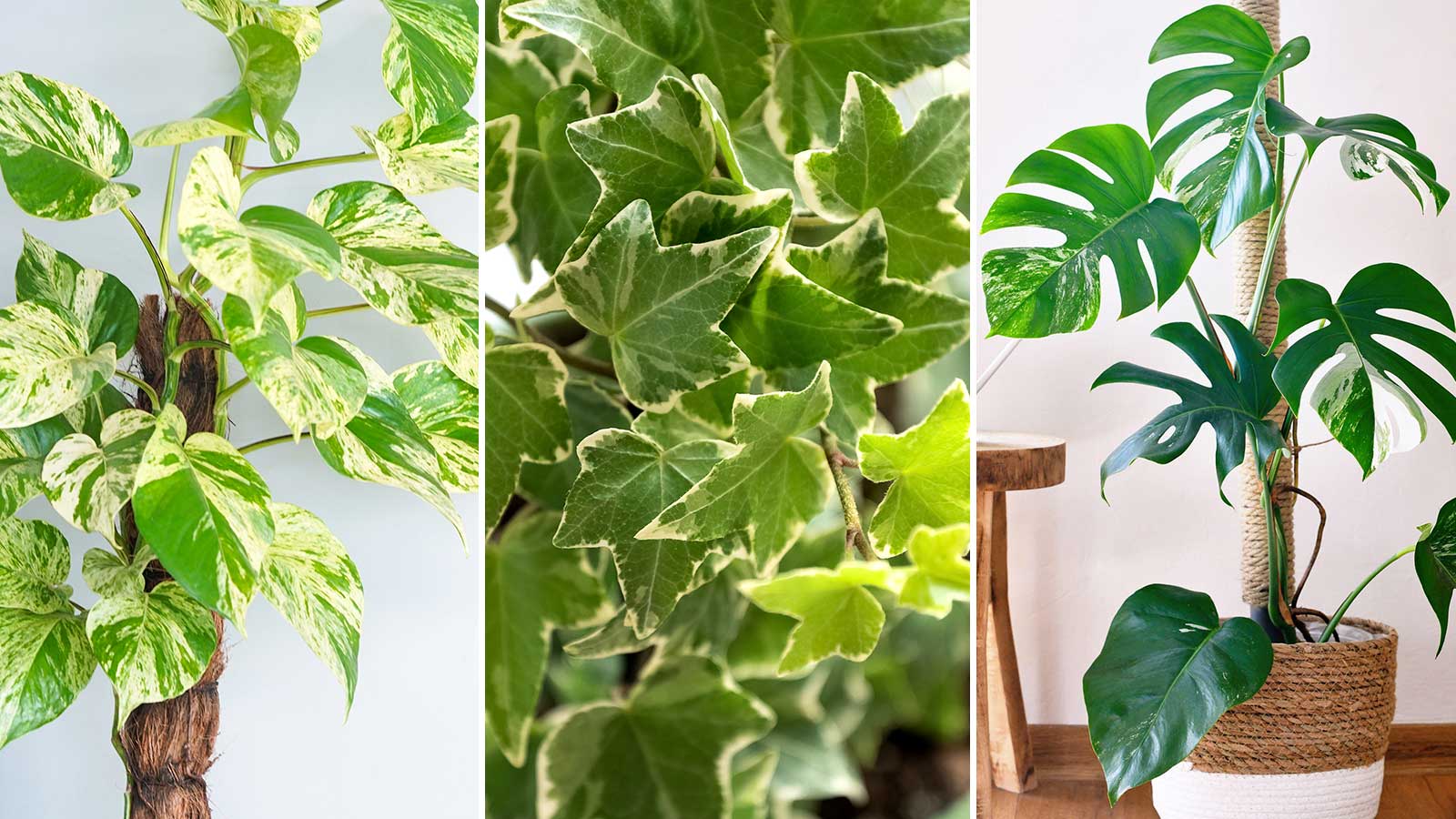

A house isn't a home without a plant or two – and the more, the merrier in my opinion. They make perfect companions for desks, windowsills, and even the floor, but to ramp up the drama, it pays to think vertically.
Indoor hanging plants are a great way to transform empty spaces. But, when planning how to style your houseplants, don't overlook the possibility of growing upwards, too. Many varieties will happily climb if supports are provided (and conditions are right). And the results can have serious wow-factor.
Below, you'll find five fabulous options for creating an indoor vertical garden, from large-leaved beauties to more delicate vines. Plus, you'll find tips from the experts for keeping them in top health.
1. Monstera deliciosa
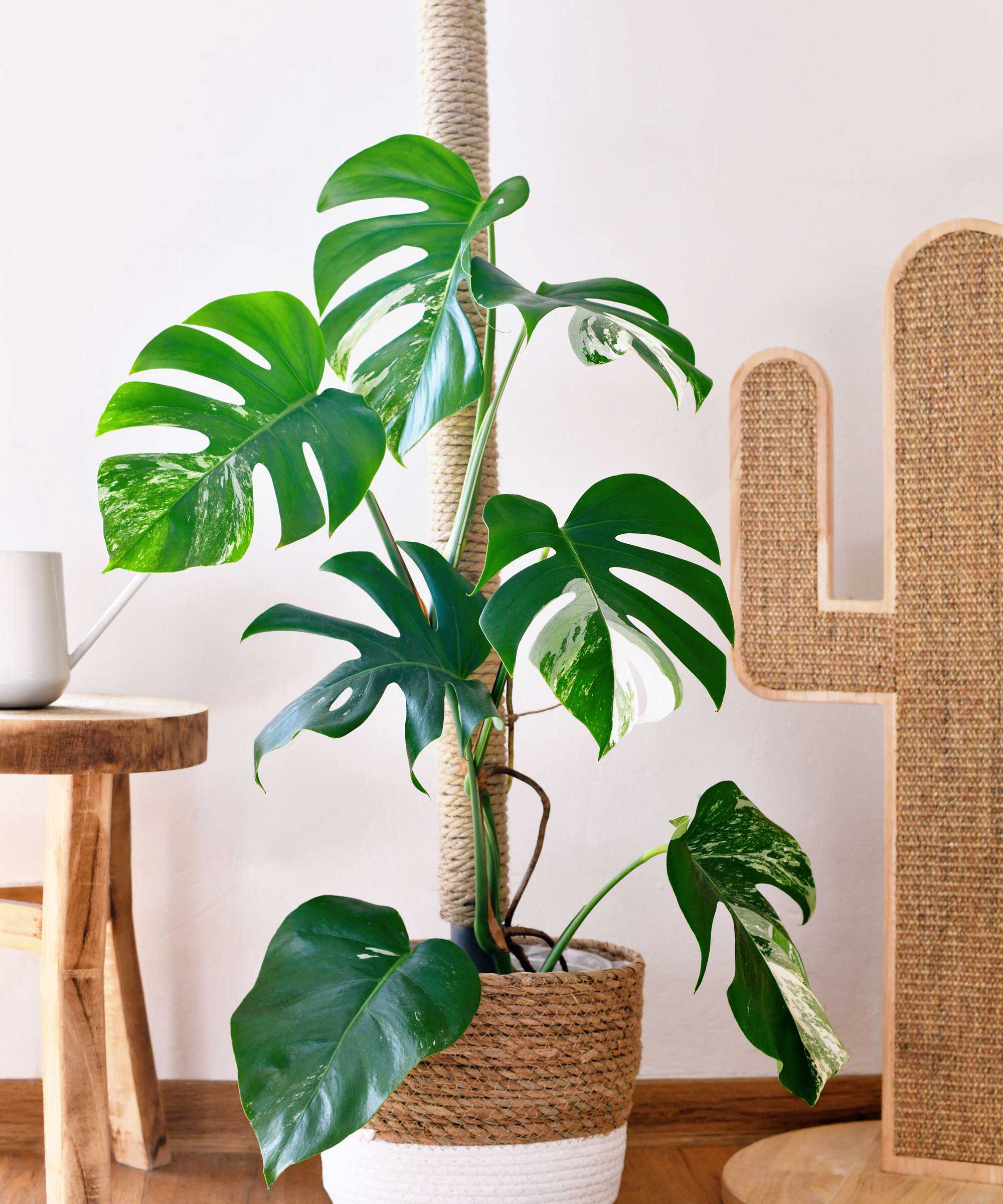
Monstera deliciosa is a well-loved tropical plant
Monstera deliciosa plants always create a statement and, with their vining growth habit, can reach impressive heights.
For suitable climbing support ideas, Nikki Bruner of Perfect Plants Nursery recommends using a wooden pole, moss pole, or trellis. Paris Lalicata from The Sill adds that supports are usually easier to incorporate when repotting. 'Gently lay the stalks (where the aerial roots grow) against the support and attach them using plant ties or velcro plant tape, ensuring not to damage the stems or make them too tight,' she says.
Paris also recommends placing the plant in bright light and rotating it periodically to encourage even growth.
In terms of general care for Monstera deliciosa, Nikki advises allowing the top inch of soil to dry out between waterings – this will help prevent overwatering and root rot. 'The monstera will grow happier and larger under warm, humid conditions,' adds Paris. 'Maintain temperatures between 65-75ºF and aim for 40% relative humidity.'
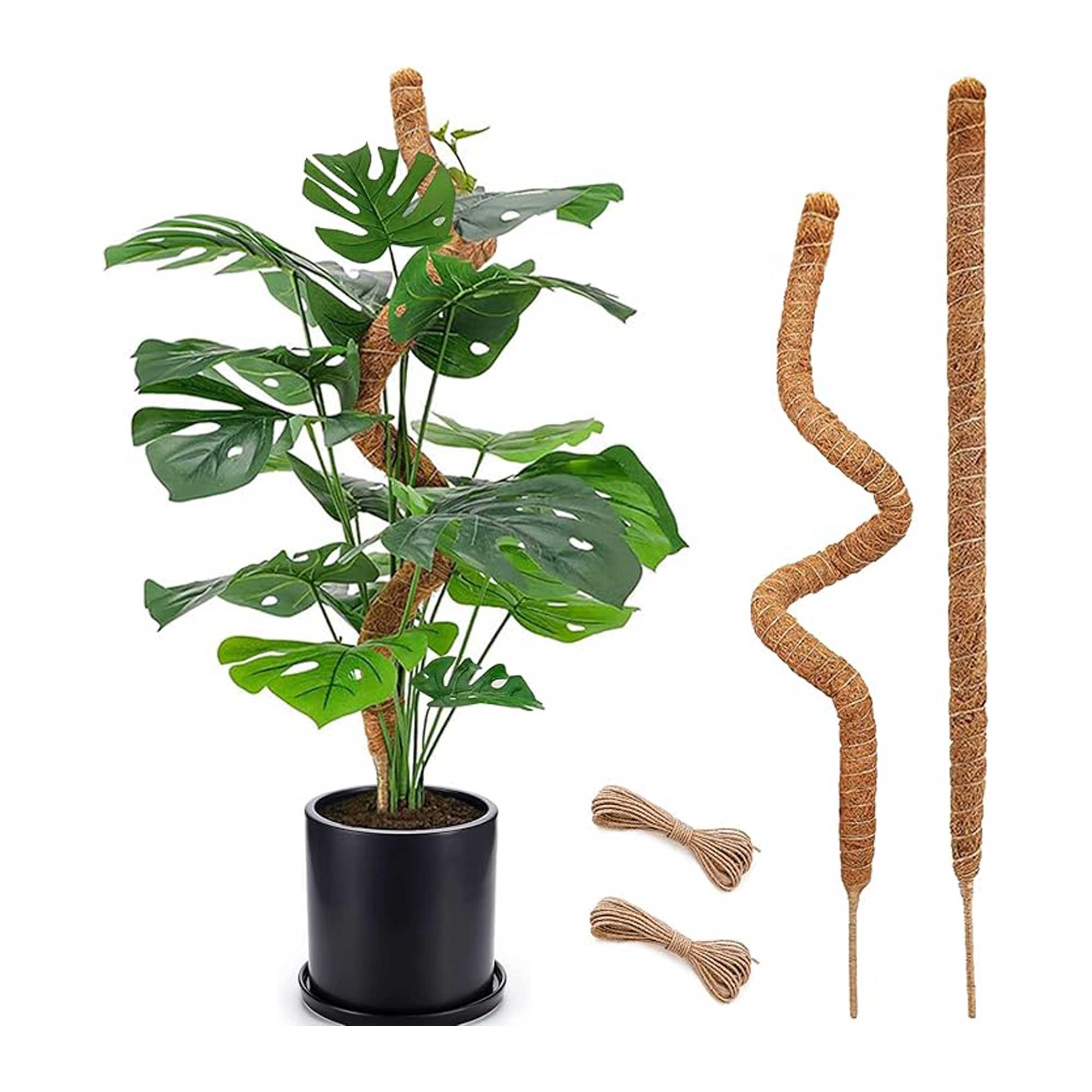
These 28-inch bendable moss poles from Soupiar come in a pack of two, with jute ropes included to secure your plants. Longer options are also available.

Nikki Bruner is the marketing manager at Perfect Plants Nursery. With a passion for plants and expertise in marketing, Nikki combines her knowledge of the nursery industry with her creative thinking to promote and highlight the exceptional offerings of Perfect Plants Nursery. She is dedicated to ensuring customer satisfaction and providing valuable insights for plant lovers.

Paris has been with The Sill for almost five years and heads up Plant Education and Community. A self-taught plant expert with over 10 years of experience growing houseplants, she currently maintains an indoor garden of more than 200 plants in the northeast. Her passion is making plant care more digestible for budding plant parents and sharing the many benefits of having plants indoors.
2. Pothos
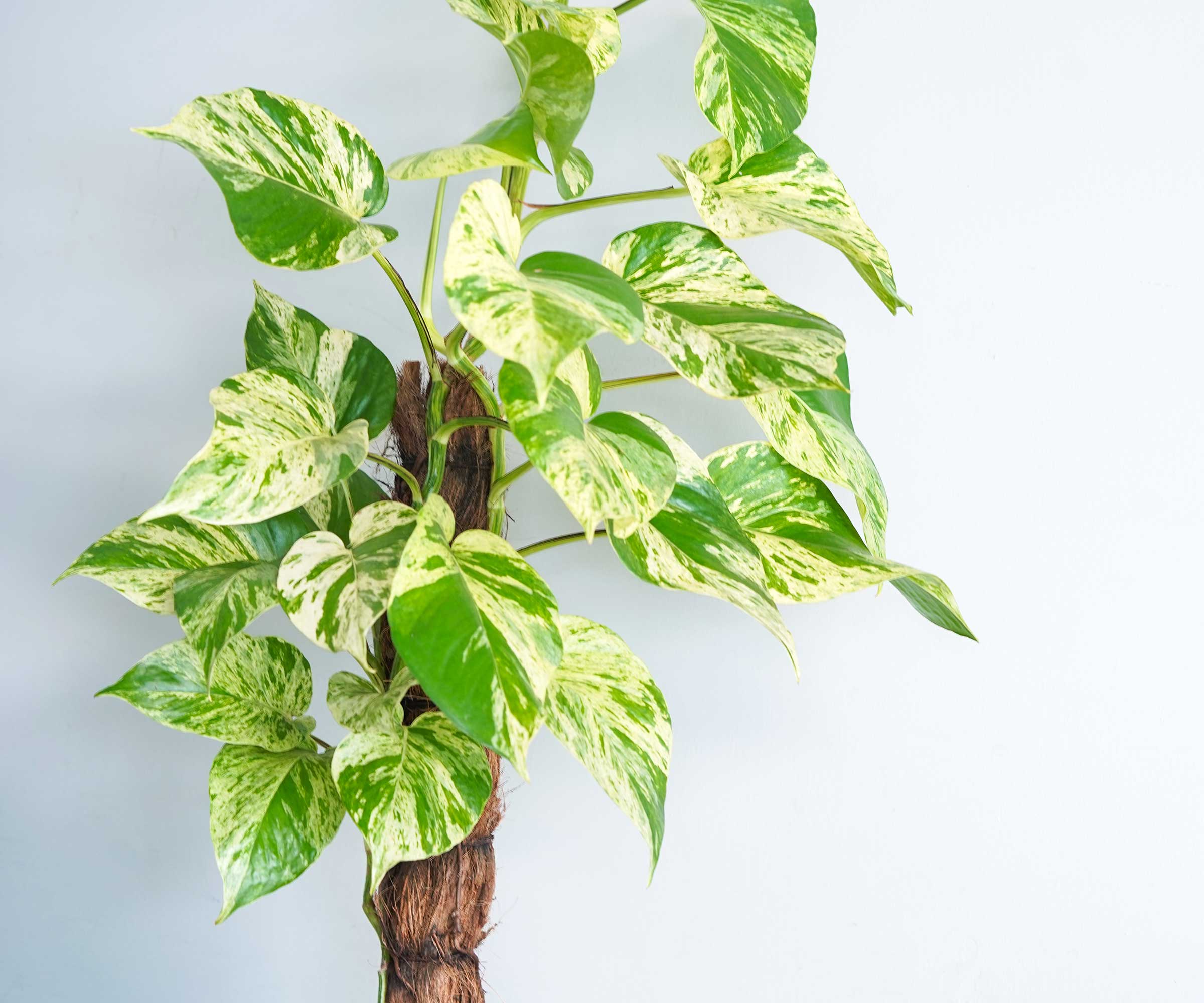
Variegated varieties are particularly eye-catching
Pothos are fast-growing plants with heart-shaped leaves that can also be trained up a houseplant trellis or pole. 'Secure the vines to the structure using soft plant ties, twist ties, or clips,' says Nikki.
'Regularly trim back leggy vines to encourage bushier growth and maintain the desired shape,' she continues. 'Ensure the soil is well-draining and water when the top inch of soil feels dry to the touch to prevent waterlogged roots.'
Top tip: Want to train your pothos horizontally along walls, too? I've had successful results using command hooks, available from Amazon, to brighten up my dining nook.
3. Monstera adansonii
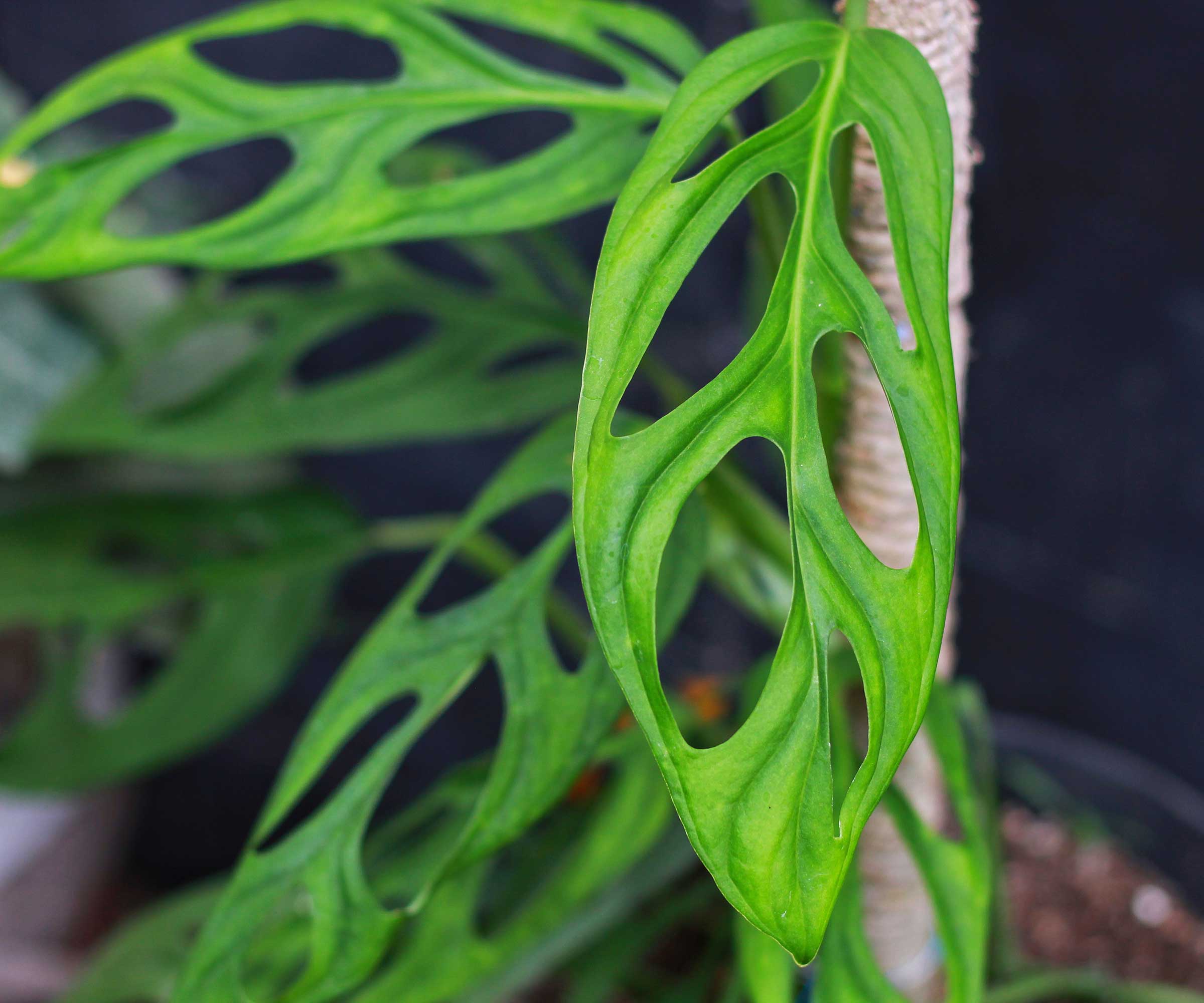
Monstera adansonii have smaller leaves than Monstera deliciosa
These plants are related to Monstera deliciosa but have smaller leaves and a more compact growth habit. Like Monstera deliciosa, a moss pole works well as a support. 'Attach the stem to the pole so that the aerial roots or nodes of the plant touch the moss or coir,' says Halina Shamshur, an expert from Plantum.
Place the plant in a well-lit area, but protect it from the bright afternoon sun, as it can burn the leaves, Halina adds.
'In summer, water the plant once the top layer of the soil dries out, and let half the pot (or even more) dry out between waterings in fall and winter,' she continues. 'Monstera prefers high humidity, so regular misting is a must, especially in dry and hot summers.'
You can shop for Monstera adansonii plants at Lively Root.

Halina Shamshur is a resident plant expert for the Plantum app, which helps users identify plant species, diagnose their conditions, and get specific care advice. Halina has over 25 years of experience as a professional botanist and five years of experience consulting on botany-related topics for Plantum.
4. Philodendron

The 'micans' philodendron has velvety leaves
There are many types of philodendron, and some are excellent picks for growing vertically. These include the heart-leaf philodendron (Philodendron hederaceum), and the 'micans' variety.
'Philodendron enjoys bright but diffused light,' says Halina. 'If placed in shade, it’ll stretch out and its leaves will become thin.
'Mist this plant once every two days in summer and one to two times a week in winter, depending on the temperature,' she continues. 'The rule of thumb is: the lower the temperature, the less frequent the misting.'
Halina also recommends watering these plants regularly in spring and summer, allowing the topsoil to dry between waterings. 'In winter, you can ease up on watering. Philodendron isn’t keen on overwatering, so do your best to avoid waterlogging the soil.'
5. English ivy
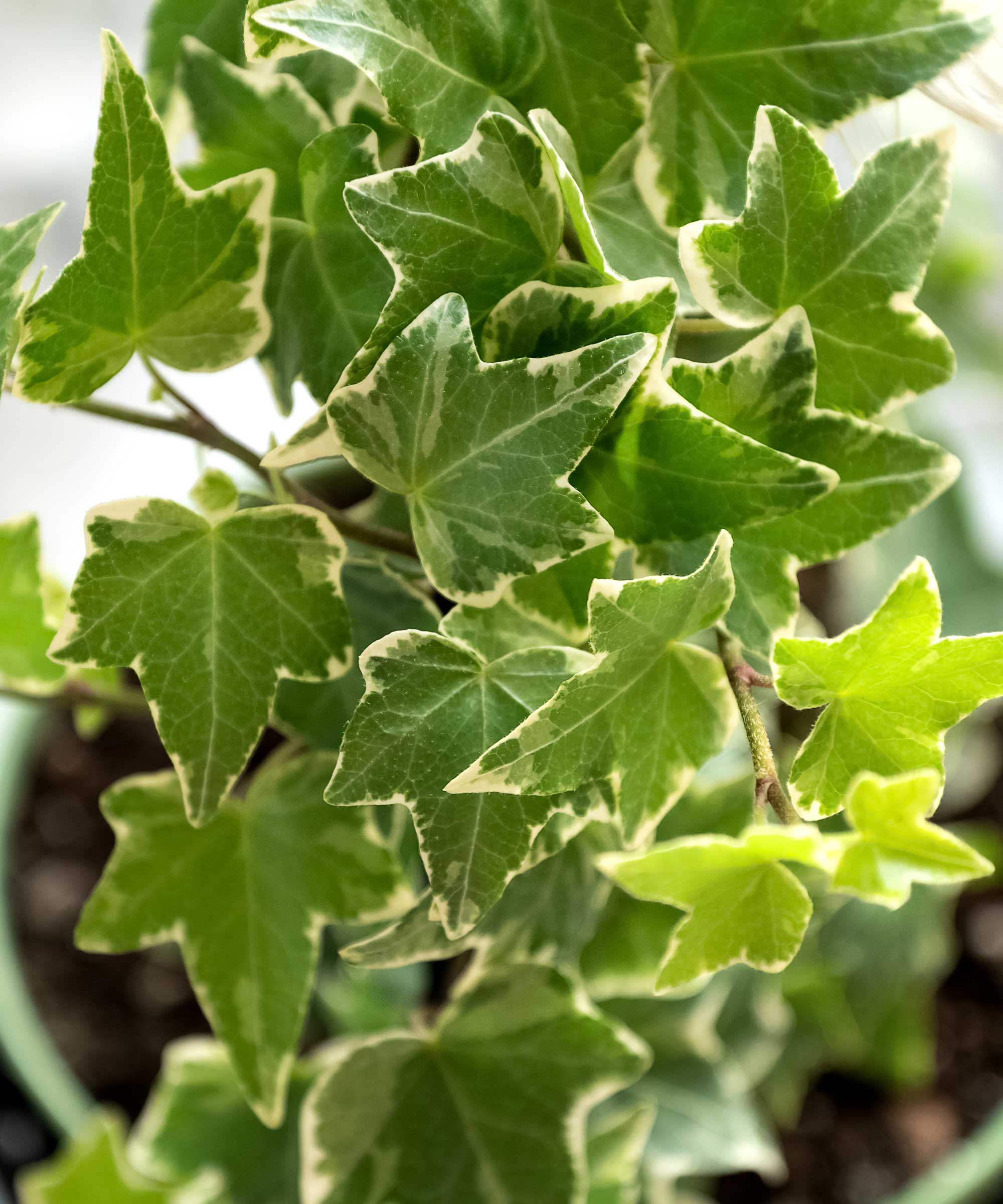
A more delicate option for training up a trellis
English ivy is a pretty plant that can be trained up a pole or larger support to create a living wall.
'Ensure the structure is sturdy and allows the vines to cling or be tied without damaging their delicate stems,' says Paris. 'While they do create aerial roots that help them climb, they will need help initially, and the vines may need to get adjusted down the line.'
These plants thrive in bright, indirect light but can tolerate morning direct sunlight from an east window, Paris continues. 'Avoid low light and direct sunlight from the south exposure, which can scorch its leaves.'
She recommends watering them when about half the soil has dried out, ensuring good drainage to avoid root rot. 'Regularly prune and guide the vines over time to encourage healthy growth and prevent tangling or overcrowding on the support structure.'
FAQs
How can you extend the height of a moss pole?
If your plant has reached the top of its moss pole, consider adding a new, longer pole to the pot, securing it to the original with string. If possible, do this when repotting your plant to avoid damaging the roots. Alternatively, shop for stackable designs.
What should I bear in mind when growing houseplants vertically?
As with any houseplant, ensure conditions are right to encourage healthy growth – proper, even lighting and watering are essential. Avoid tying plants to their supports too tightly as this can damage the stems as they grow.
Vertical growing also calls for stability, as too-small pots can topple over if they're top-heavy. Be sure to repot plants as they grow, and consider pruning particularly wayward stems.
Also, if you have four-legged friends, remember to check whether plants are poisonous to pets before bringing them into your home.
If you're looking for more ways to turn your home into a botanical haven, our guide on plant stands and how to hang a plant from the ceiling are well worth a look.
Sign up to the Homes & Gardens newsletter
Design expertise in your inbox – from inspiring decorating ideas and beautiful celebrity homes to practical gardening advice and shopping round-ups.

Holly started writing about gardening five years ago, and she is a regular contributor to Homes & Gardens. She has also written many gardening features for Woman & Home and Real Homes, too. She has previous experience as a professional gardener, where she helped to plant and maintain private gardens. Holly has also looked after allotment plots over the years and loves to grow her own flowers and veggies from seed. In her spare time, she enjoys visiting local gardens, botanical drawing, and tending to her ever-growing collection of houseplants.
-
 The statement color trend Alicia Keys wore to the Met Gala has finally convinced me to decorate with 2025's most divisive color of the year
The statement color trend Alicia Keys wore to the Met Gala has finally convinced me to decorate with 2025's most divisive color of the yearRed is not just on everyone's closets, it's in everyone's home too
-
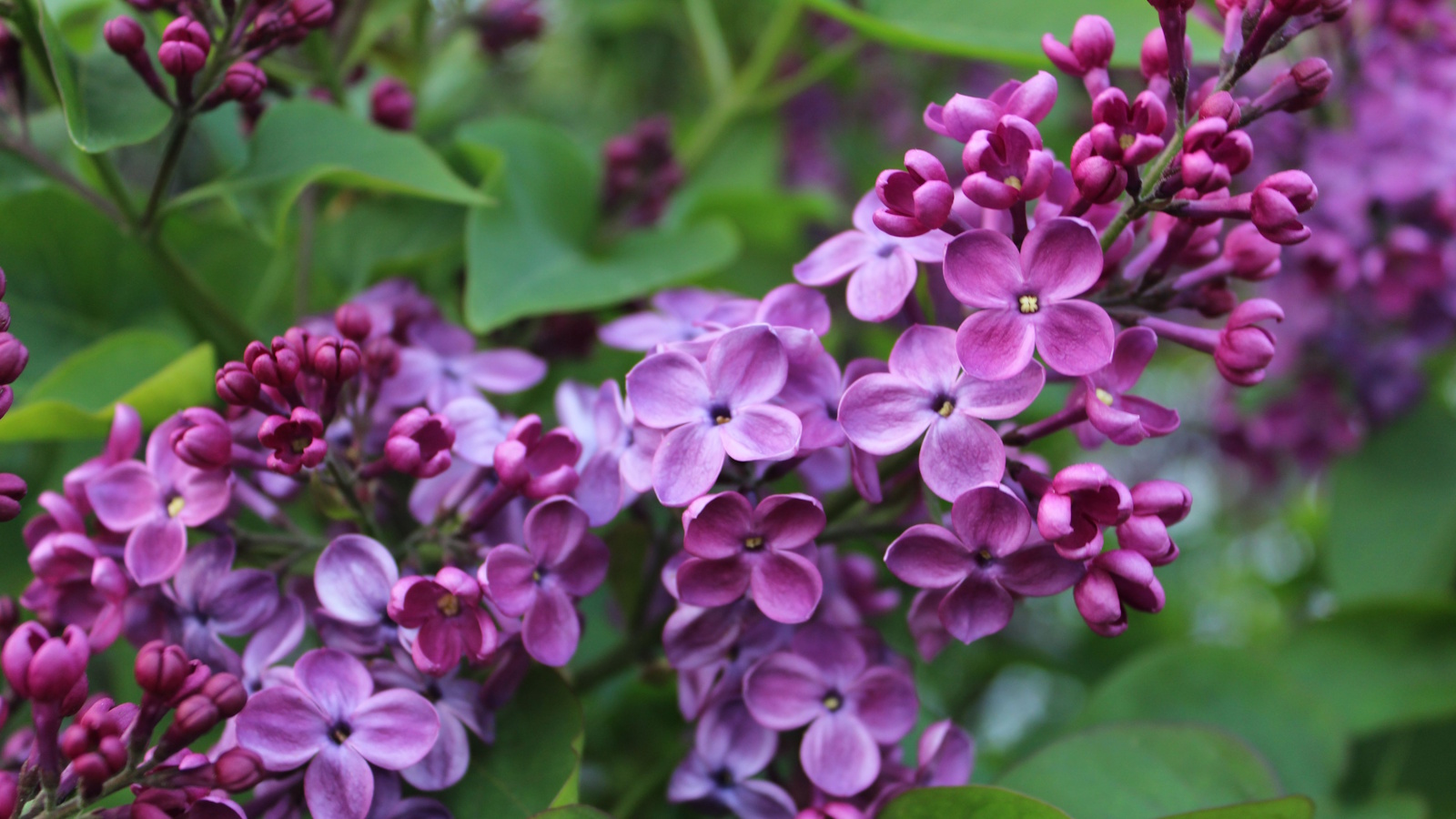 Is it necessary to deadhead lilac flowers? Here's what I've learned after a decade working as a professional gardener
Is it necessary to deadhead lilac flowers? Here's what I've learned after a decade working as a professional gardenerDeadheading spent lilac blooms can help to improve the appearance of your plants, but it won't encourage any more blooms